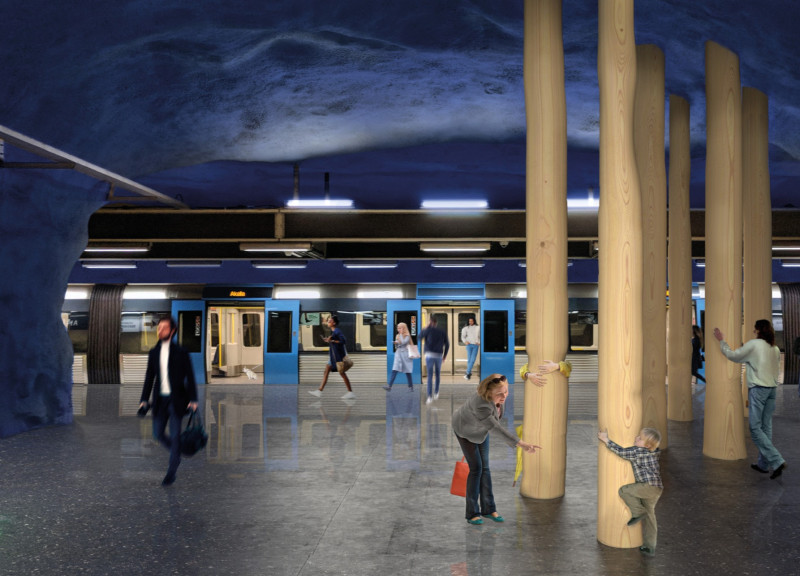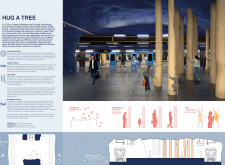5 key facts about this project
Unique Design Approaches and User Interaction
One notable feature of this project is the use of rounded, wood-like columns that mimic tree trunks. This design choice not only establishes a visually appealing focal point but also invites tactile engagement from commuters. The integration of wooden structures serves as a stark contrast to the typical rigid materials found in urban infrastructure. The warmth of the wood makes the station feel more approachable and comfortable for users.
Additionally, the implementation of heating elements embedded within the columns improves comfort, particularly in colder weather. This consideration for thermal comfort is an innovative aspect that ensures the design remains functional and user-centric throughout the year. The incorporation of natural materials plays a crucial role in reinforcing a connection to the environment, which is especially relevant in a bustling city like Stockholm where nature often feels distant.
Architectural Design and Functional Outcomes
The architectural design prioritizes sensory experience over mere functionality. The juxtaposition of concrete flooring, which provides durability, against the soft, inviting wood of the columns creates a balanced aesthetic that improves the overall commuter experience. The project's layout encourages various forms of social interaction, fostering community engagement among travelers.
By embracing a concept that combines natural elements with urban infrastructure, "Hug a Tree" stands apart from standard subway station designs. This project redefines how public spaces can be utilized, emphasizing human experience while maintaining the necessary functionality of a transit hub. For those interested in gaining deeper insights into the architectural plans, sections, and overall design ideas, exploring the project presentation is encouraged.























